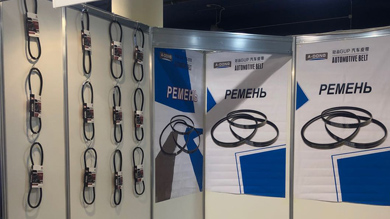- Arabic
- French
- Russian
- Spanish
- Portuguese
- Turkish
- Armenian
- English
- Albanian
- Amharic
- Azerbaijani
- Basque
- Belarusian
- Bengali
- Bosnian
- Bulgarian
- Catalan
- Cebuano
- Corsican
- Croatian
- Czech
- Danish
- Dutch
- Afrikaans
- Esperanto
- Estonian
- Finnish
- Frisian
- Galician
- Georgian
- German
- Greek
- Gujarati
- Haitian Creole
- hausa
- hawaiian
- Hebrew
- Hindi
- Miao
- Hungarian
- Icelandic
- igbo
- Indonesian
- irish
- Italian
- Japanese
- Javanese
- Kannada
- kazakh
- Khmer
- Rwandese
- Korean
- Kurdish
- Kyrgyz
- Lao
- Latin
- Latvian
- Lithuanian
- Luxembourgish
- Macedonian
- Malgashi
- Malay
- Malayalam
- Maltese
- Maori
- Marathi
- Mongolian
- Myanmar
- Nepali
- Norwegian
- Norwegian
- Occitan
- Pashto
- Persian
- Polish
- Punjabi
- Romanian
- Samoan
- Scottish Gaelic
- Serbian
- Sesotho
- Shona
- Sindhi
- Sinhala
- Slovak
- Slovenian
- Somali
- Sundanese
- Swahili
- Swedish
- Tagalog
- Tajik
- Tamil
- Tatar
- Telugu
- Thai
- Turkmen
- Ukrainian
- Urdu
- Uighur
- Uzbek
- Vietnamese
- Welsh
- Bantu
- Yiddish
- Yoruba
- Zulu
ኅዳር . 10, 2024 11:06 Back to list
V-Belt Production Equipment for Efficient Manufacturing Processes
Understanding V-Belt Making Machines A Key to Efficient Production
V-belts are essential components in various mechanical systems, particularly in power transmission applications. They are designed to transfer power between rotating shafts while providing a reliable grip and flexibility. The production of V-belts necessitates specialized machinery, known as V-belt making machines, which have become paramount in the manufacturing industry. This article delves into the significance of V-belt making machines, their components, and the overall benefits they offer.
The Importance of V-Belts
V-belts are widely used in a variety of machines and equipment, from automotive engines to industrial machinery. Their unique trapezoidal shape allows them to fit snugly into the grooves of pulleys, maximizing efficiency and minimizing slippage. This design provides a larger contact surface area, enabling the transfer of higher amounts of torque compared to flat belts. The demand for durable and efficient V-belts continues to increase, driving manufacturers to invest in advanced machinery to meet market needs.
Components of a V-Belt Making Machine
A standard V-belt making machine comprises several key components designed to automate and streamline the production process
1. Material Feeding System This component ensures a consistent and precise supply of raw materials, typically rubber, fabric, and reinforcing agents, to the production line.
2. Mixing Unit Here, the raw materials are mixed to create a homogeneous compound. The mixing process is crucial as it affects the strength and durability of the final product.
3. Extrusion Unit The mixed compound is extruded into the shape of a V-belt. This stage involves heating the material and forcing it through a mold, ensuring that the belt obtains the desired dimensions and profile.
4. Curing Oven Once shaped, the V-belts are passed through a curing oven where they are subjected to heat and pressure. This process solidifies the material and enhances its physical properties, making it suitable for use in various applications.
5. Trimming and Finishing Station After curing, the belts are trimmed to eliminate excess material and ensure uniform thickness. This station may also include additional finishing processes, such as surface treatment or additional coatings to improve abrasion resistance.
v belt making machine

6. Inspection and Testing Quality control is a crucial aspect of V-belt production. Belts are rigorously tested for tensile strength, flexibility, and wear resistance to meet industry standards.
7. Packaging Unit Finally, finished products are appropriately packaged for shipping and distribution, ready to reach clients all over the world.
Advantages of Using V-Belt Making Machines
Investing in V-belt making machines offers numerous advantages for manufacturers
- Efficiency Automated machines significantly speed up production times compared to manual processes. This efficiency leads to increased output and higher profitability.
- Consistency Machines ensure uniformity in size and quality, which is critical for the performance of V-belts. Consistent production minimizes defects and strengthens brand reputation.
- Cost-Effectiveness While the initial investment in machinery can be substantial, the long-term savings on labor costs and material waste often justify the expense. Additionally, higher efficiency translates to lower production costs per unit.
- Innovation Modern V-belt making machines are equipped with advanced technology that allows for the development of innovative belt designs, opening new market opportunities.
Conclusion
V-belt making machines play a pivotal role in the manufacturing sector, facilitating the production of high-quality V-belts that are essential for efficient power transmission. By investing in advanced machinery and optimizing production processes, manufacturers can meet the increasing demand for durable and reliable V-belts while maintaining competitiveness in the market. As technology continues to evolve, the future of V-belt manufacturing holds promising advancements that will further enhance production capabilities and product quality.
-
Precise Timing Belt Operation: Function & FAQ Guide
NewsAug.10,2025
-
Precision Double-Sided Toothed Endless Flat Drive Belts
NewsAug.09,2025
-
Durable Tooth Belts: Precision Power for Poly V Belt Drives
NewsAug.08,2025
-
Reliable Diesel Engine Belts & Tensioners for Optimal Performance
NewsAug.07,2025
-
23100-KVB-901 Drive Belt for Honda VARIO | OEM Performance
NewsAug.06,2025
-
Variable Belt Drive AI Optimized for Efficiency
NewsAug.05,2025

